Do you know that the asparagus plant is a perennial?
Once the plant establishes itself in the soil, its tender spears will return a year after year.
Moreover, its ferny foliage tends to make stunning ornamental.
You can grow the Asparagus plant in most temperate regions, however, it tends to grow more robustly in cooler areas that receive long winters.
The edible part of the plant is the young stem shoot, which emerges as soil temperature rises above 50°F (10°C) in spring.
It is important to note that you should note harvest the plant during the first couple of seasons.
You will need to allow the plant to establish itself before you can harvest sustainably.
The patience is worth it. This is because the asparagus bed can be productive for 15 to 20 times up to 30 years.
Additionally, the asparagus plant is a fast producer, sending up new spears every few days in the spring.
Furthermore, the plant tends to produce about 1/2 pound of spears per foot in a row.
Keep on reading.
Asparagus Plant
One of the first vegetables you can harvest in spring is the asparagus plant.
Moreover, it is a perennial vegetable you can grow in your garden.
As it will be in the same place for years, it is important to find a location with all the growing conditions this plant needs.
Moreover, the asparagus plant is slow to mature and takes about 3 to 5 years to really fill in.
Once they start producing, you can harvest its spears for more than a month every spring.
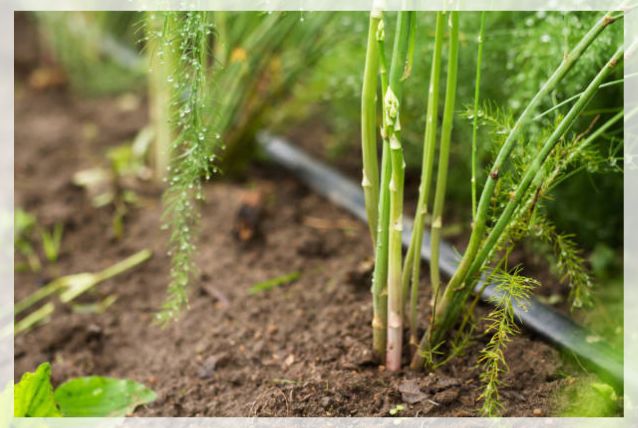
The spears of asparagus are the straight young shoots of the plant, with scale-like tips.
For handling these shoots, many gardeners recommend wearing gloves as you can contact dermatitis.
In late summer, the female plant tends to produce red berries that are toxic to humans.
While later in the season when the foliage matures into airy, light-green ferns, it changes its color to golden in the fall.
You will often plant this perennial from roots or crowns, in early spring.
Quick Facts about Asparagus Plant
Some quick facts about the asparagus plant are:
| Common Name | Asparagus |
| Botanical Name | Asparagus officinalis |
| Family | Asparagaceae |
| Plant Type | Perennial, vegetable |
| Mature Size | 4 ft. tall, 2 ft. wide |
| Sun Exposure | Full sun |
| Soil Type | Sandy, loamy |
| Soil pH | Neutral, acidic |
| Bloom Time | Summer, fall |
| Flower Color | Yellow, green |
| Hardiness Zones | 3-10 (USDA) |
| Native Area | Europe, Africa |
| Toxicity | Berries toxic to humans |
Planting Asparagus
It is important to note that asparagus shears are not big enough to harvest for up to 3 years. however, you will need to prepare the beds for the best results.
As asparagus is a perennial, you will need to allocate a place in your vegetable garden.
Or a better option is to build a separate bed.
Your plant will need space, so make sure to plant the crowns 12 to 18 inches apart.
Moreover, they will not spread out much in the first couple of years, however, once they establish, they will quickly fill in.
Heirloom varieties will need extra space, as there are both male and female plants.
This means that will tend to produce seeds and will self-sow.
While ewer hybrid varieties tend to produce only male plants that do not have seeds, so they will need a little less space.
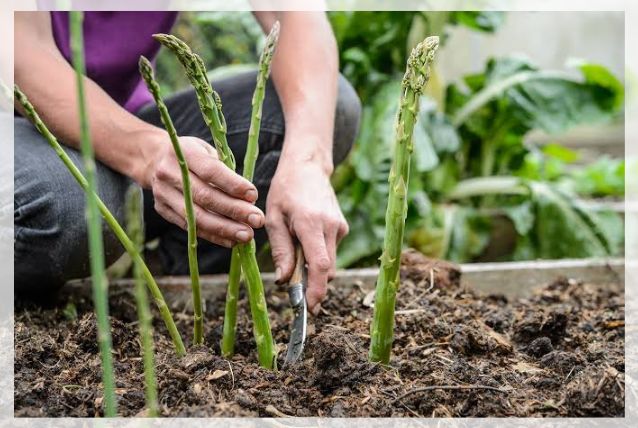
This is because they will spread only through the growth of the existing crown.
You can start the plant from seed about 4 weeks before the last expected frost.
However, seeds tend to add a number of years to your wait.
Like most people, you will find it easier to grow asparagus from crowns, which are often available in the spring.
They tend to look like worn-out string mops, but they are very much alive.
Unlike other plants, the roots of asparagus crowns can withstand some air exposure and you will find thin them sold as bare roots.
They tend to look firm and fresh, not withered or mushy.
It is important to note that the most common way to plant an asparagus crown is in a trench.
In spring, dig a trench that is about 12 inches deep and 12 inches wide.
Make sure to combine compost, fertilizer, or other organic matter and then create mounds with it about 18 inches apart.
The top of the crown should be 6 inches below the soil line.
Then cover the crown with soil and water well. As shoots appear, you will need to add more soil to fill the trench until it flushes with the soil line.
Furthermore, make sure to remove weeds when preparing the bed and keep weeding while the plant is young.
Asparagus roots form a tightly woven mat, which makes it challenging to remove weeds.
Add a layer of mulch to the bed to control weeks, however, avoid interplanting with other crops, as your plant dislike competition for nutrients.
Learn more about Plant Nutrients for Crop Production here.
Asparagus Plant Care
Factors to consider when growing asparagus plant are:
Light: It is important to note that the asparagus plant tends to thrive best in full sun.
Without enough daily sunlight, you will have thin spears and weak plants that are prone to problems.
Soil: As a long-lived perennial it will take time to improve the soil.
Make sure to work in with enough organic matter and make sure that the soil pH is neutral ranging from 6.5 to 7.0.
Moreover, make sure to get rid of weeds and large stones in the planting area. The soil must drain well so that your plant never sits in the water.
Water: Your plant will need regular watering, especially when they are young.
Give them 1 to 2 inches of water per week during the first two growing seasons while giving older plants about 1 inch per week.
Moreover, give them a good start when you first plant them and as a result, you will have fewer problems in the future.
Consider adding drip irrigation or a soaker hose to the asparagus bed.
Temperature and Humidity: During the growing season, your plant tends to thrive best in temperatures of 70 to 85 degrees Fahrenheit during the day.
While 60 to 70 degrees at night is best for them.
During spring, it will begin to grow shoots when the soil temperature reaches 40 degrees.
However, any frost can cause damage once the shoots start to grow.
You can see slow growth with temperatures above 85 or below 55 degrees.
Fertilizer: When preparing beds for asparagus plants, make sure to add compost and an all-purpose organic fertilizer to the trench as well as rock phosphate.
Rock phosphate is a natural mineral plant that helps to promote new growth.
These nutrients will help your plant to develop a good, strong root system.
To keep the soil rich and feed the plant, make sure to topdress the soil annually with compost.
You can do this early spring before the shoots begin to appear or in the fall after the fronds die back and cut to the ground.
Moreover, asparagus is a heavy feeder, and you will need a dose of fertilizer in mid-spring when it is actively growing.
Types of Asparagus Plant
The new cultivators tend to be all male.
This means that they will put all their energy into growing the plant, not setting seeds. Some popular choices are:
‘Mary Washington’: This one is the most common variety as you can breed it for rust resistance.
‘Jersy Giant’: It yields early and is resistant to rust and fusarium wilt.
‘Brock Imperial’: This one is famous for its high yield.
‘Princeville’: This one tends to perform well in warmer climates.
‘Purple Passion’: A sweet purple variety.
Green vs. White Asparagus
It is important to note that both white and green asparagus is the same, however, it turns white through a process: Blanching.
This deprives the plant of light so it does not photosynthesize.
You can do this by covering the growing spears with either soil or plastic tunnels.
The final product is smooth, white, and virtually fiber-free provided the harvested spears are immediately chilled to prevent the fiber from forming.
Harvesting Process
In most cases, the harvesting of your plant will not begin until the first year after the plantation of the asparagus plant.
They will need time to establish themselves and build up their root system.
Moreover, this is especially true in the first year of planting when the shoots are not large.
Some gardeners tend to harvest spears if they are the thickness of a pencil or more during the second year.
For healthy, well-established asparagus, patience is the key.
By the third year, you will be able to harvest the plant for about two weeks.
Then you will need to get the new spears to grow undisturbed after the initial harvest.
Frond tends to unfurl from the spears, creating a pretty, airy foliage that feeds the plant.
During the fourth year, you can begin harvesting spears that are 5 to 7 inches long before the tip becomes loose, however, the diameter does not matter.
You can either snap off the spears or cut them with a knife just above the soil line.
However, if you are using a knife, make sure to be careful that you do not slice the later shoots that are still underground.
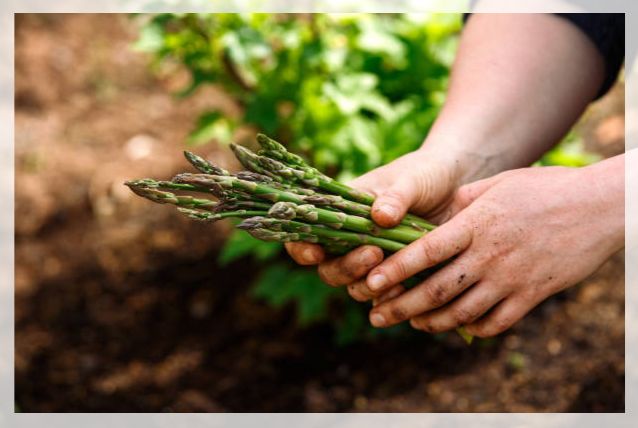
Harvest for about 4 to 6 weeks in the fifth year.
In years to come, the shoots will continue to emerge from the soil throughout the spring.
After you harvest for more than a month and the weather starts to warm, the shoots will begin to get more spindly.
At this point, make sure to allow your plants to grow into mature ferny foliage.
This will feed the roots for the crop of the next year.
Asparagus plants can continue producing for 20 to 30 years and you can divide or transplant them if they become overcrowded or can benefit from the move.
Overwintering
Asparagus plant needs to be cut down to the ground each year before the new growth starts.
However, the timing is up to you.
You can remove the stalks in the fall or winter after the leaves turn yellow and die back naturally.
The benefit of early removal is that it prevents pests like asparagus beetle from overwintering in the stalks.
Leaving the stalks standing through the winter has the advantage that plant debris can hold snow.
This will protect the crowns in freezing temperatures.
In any case, you will need to remove the dead stalks in the spring before new growth starts.
Common Pests and Plant Diseases
It is important to note that asparagus plants do have not too many problems in the garden.
Fusarium wilt can be a problem with older varieties however, you can avoid it by planting resistant hybrid varieties.
The biggest pest is the asparagus beetle.
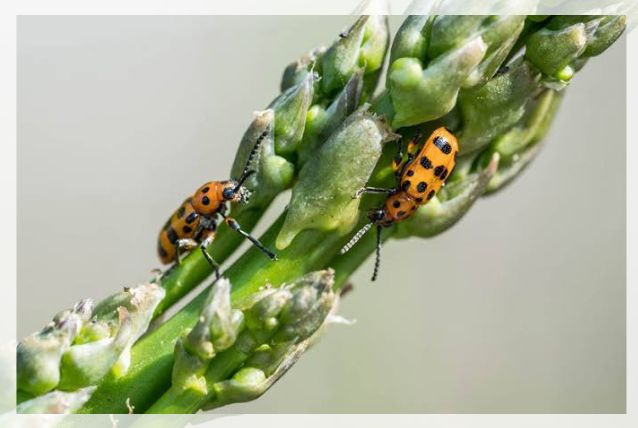
Make sure to keep watch for them as the spear emerges in spring.
They are most active in the afternoon.
Handpick the beetles and drop them in a bucket of soapy water when there are only a few. Otherwise, you can use diluted neem oil to keep them under control.
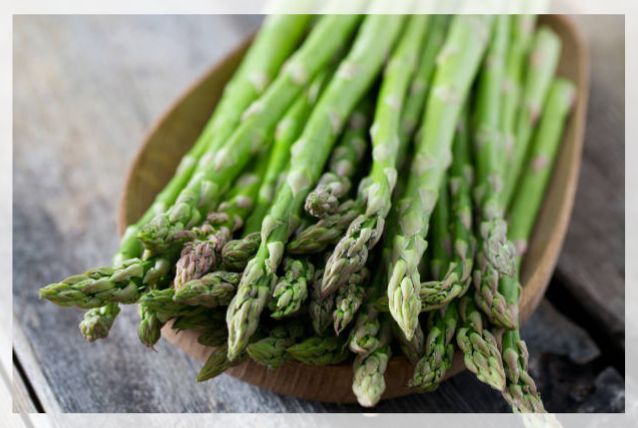





Leave a Reply